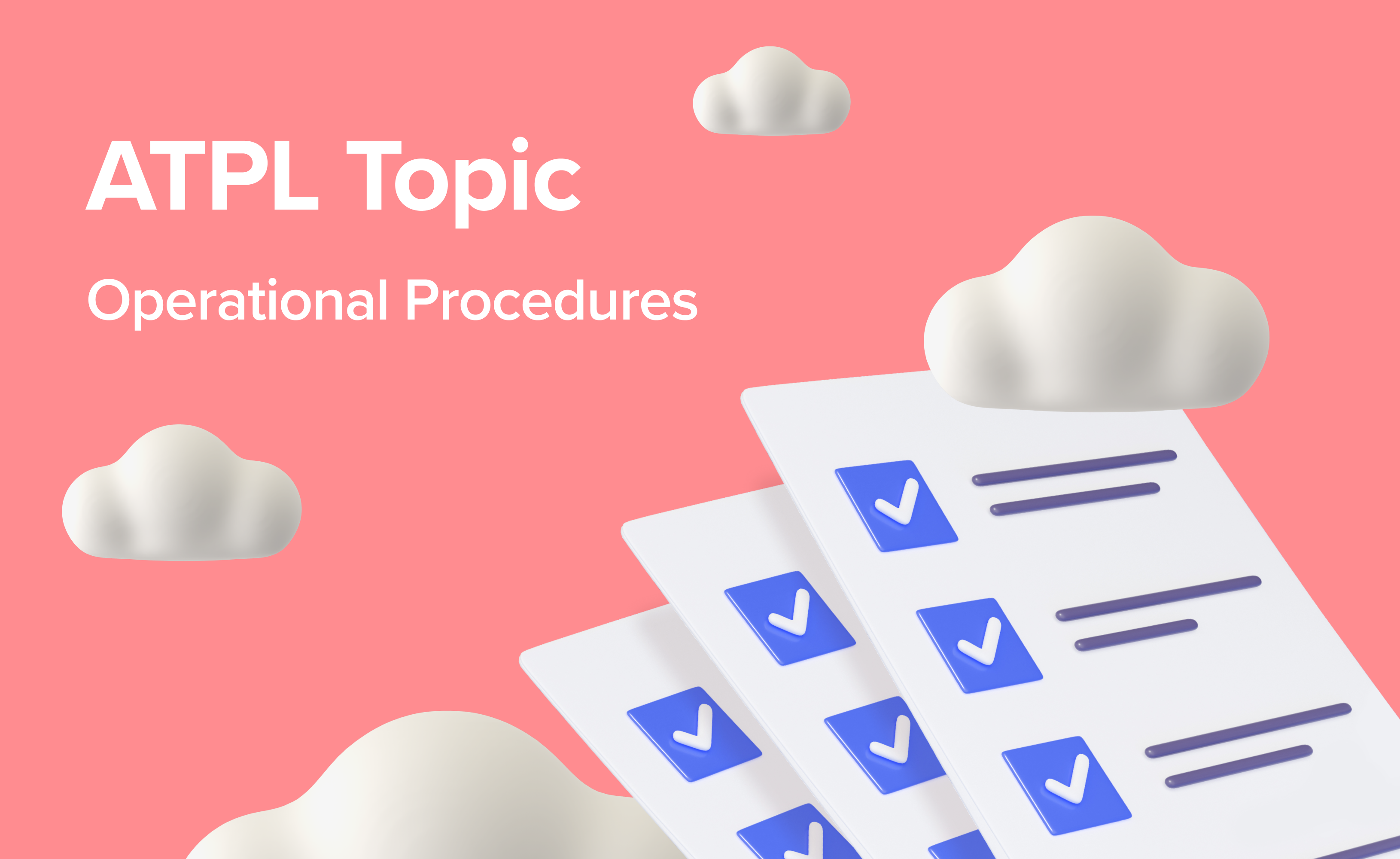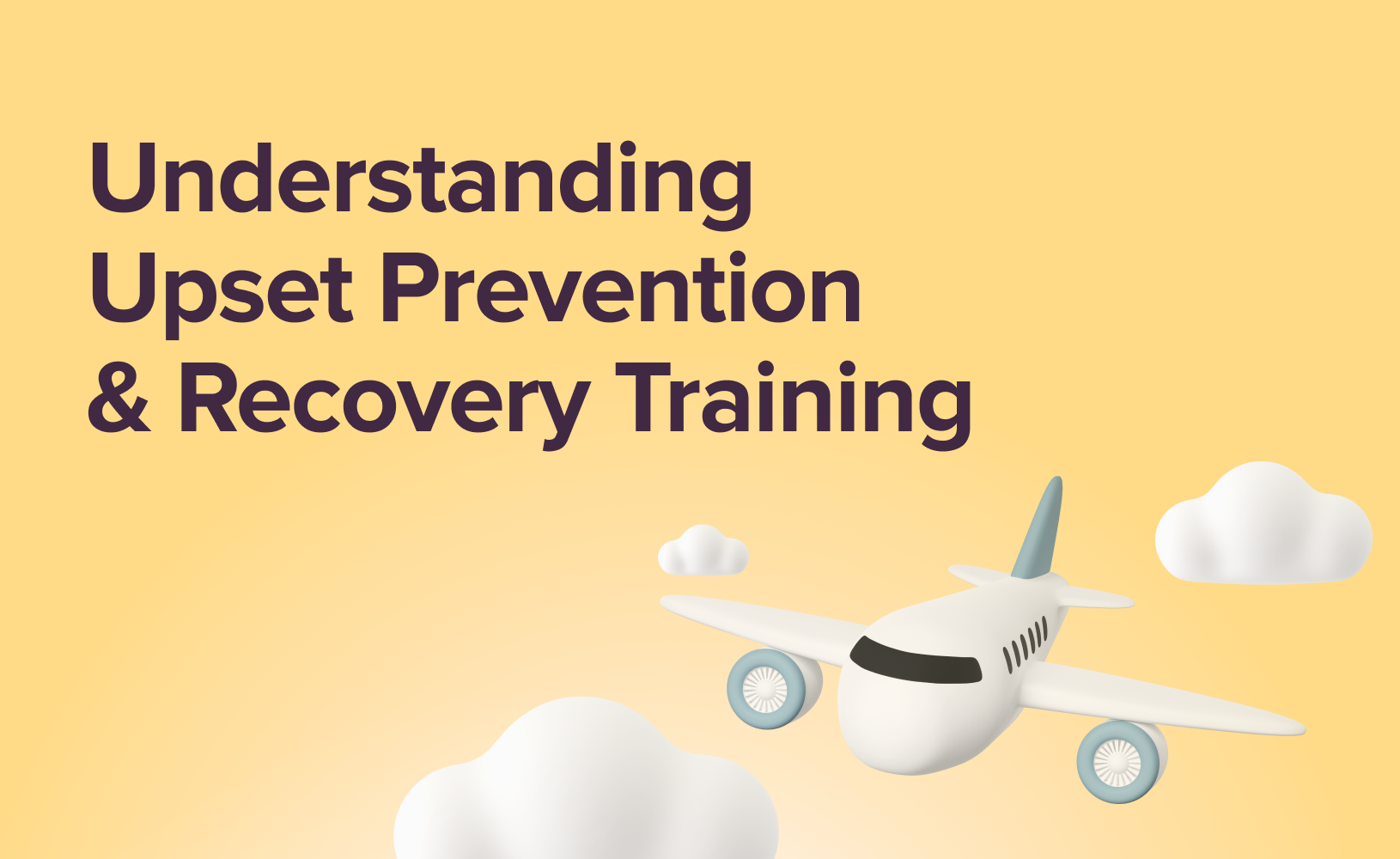Talking to ATC: 9 Common Communication Pitfalls to Avoid

Do you find yourself blanking out when it’s your turn to speak? Or perhaps you worry about misinterpreting instructions, stumbling over your words, or making a mistake? You’re not alone. These are common concerns that many student pilots face, and they can feel like insurmountable obstacles when you’re still finding your confidence in the cockpit.
In our previous article, “Take On Your First ATC Calls: A Help Guide for Student Pilots,” we tackled the initial hurdle of making that daunting first ATC call. But as many pilots quickly discover, the real challenges lie in the ongoing conversation — the fast-paced exchanges, the unexpected instructions, and the pressure to think, speak, and act altogether.
In this blog, we focus on the most frequent pitfalls trainees encounter during ATC communications. From misunderstanding instructions to managing busy frequencies, we’ll unpack these challenges and offer practical, actionable advice. You'll learn how to harness the power of ATC communication to elevate your piloting skills. Remember, every ace pilot started where you are now—with questions, fears, and a determination to improve. Let’s get started!
1. Lack of Preparation

Calling ATC without a clear plan can lead to chaotic and stressful interactions. Rushing to find frequencies, reviewing airport layouts, or searching for specific procedures during a live call can cause delays, confusion, and potential safety hazards.
To avoid this, thorough pre-flight planning is essential. Review your route, frequencies, and any specific procedures beforehand. Get to know yourself with your aircraft's performance capabilities and limitations. And finally, ensure you're organised by having your charts, checklists, and logbook readily available.
The Fix: Before calling ATC, take a moment to imagine how the conversation will flow. Think of it as rehearsing a script for a play—you’re the pilot, ATC is your co-star, and the airwaves are your stage. Most interactions involve a request, a response with instructions, and a confirmation, but the details vary depending on whom you’re talking to.
For example:
Ground Controller: When requesting taxi clearance, have the airport diagram handy. Expect instructions for taxiways and runway crossings. Knowing the layout in advance avoids confusion.
Tower Controller: When requesting take-off clearance, be ready to repeat back the runway identifier, heading, altitude, or other instructions.
Preparation doesn’t stop there. Keep frequencies for the next ATC handoff ready to reduce stress and workload. If your radio has a standby setting, pre-tune the next frequency for a seamless transition with just a push of a button. A little foresight can make you sound as sharp as a seasoned pro!
2. Jumping on the Mic Too Soon

Keying the mic immediately after switching frequencies is a common error that leads to frustration for both pilots and controllers. What might seem like dead air to you could be a brief pause in an ongoing exchange between another pilot and ATC. By transmitting too soon, you risk “stepping on” (interrupting) another call, making both messages unintelligible. This creates confusion, delays communication, and increases the workload for everyone on the frequency.
The Fix: Your patience will be appreciated by both ATC and fellow pilots sharing the frequency. After switching frequencies, take a moment to listen and assess the flow of communication. Allow a few seconds to ensure the frequency is clear. Even if it sounds silent, a pause could mean someone is thinking or preparing to speak.
If the frequency is busy, wait for an appropriate gap before transmitting. ATC often works on a rhythm, and you’ll get a feel for when to chime in.
For complex requests like VFR flight following, begin with just your call sign: “Atlanta Center, November 12345.” This alerts ATC to your presence without overloading them when they’re busy. They’ll respond when they’re ready, and you can continue the conversation.
3 Pro Tips
Be Aware of Busy Times: ATC frequencies tend to be busier during peak hours, such as early mornings or late afternoons when many flights are departing and arriving. Patience during these times is crucial.
Practise Listening Skills: Spend time monitoring ATC frequencies online or using an aviation scanner. This helps you develop an ear for the flow of conversations and learn when it’s your turn to speak.
Avoid Repeating Too Quickly: If ATC hasn’t responded after your initial call, wait at least 5–10 seconds before trying again. They might be occupied with other duties, and repeating too soon can further disrupt communication.
3. Speaking Without Thinking

Stumbling over words, forgetting key information, or peppering your message with filler sounds like “uh” and “um” can confuse ATC and waste valuable airtime. These mistakes often happen when a pilot hasn’t planned their transmission, leading to rambling or incomplete calls. Controllers must then ask for clarifications or repeat instructions, which slows down communication for everyone.
The Fix: Preparation is your best defence. By planning your messages and sticking to concise phrasing, you’ll sound more confident and professional on the radio. With time and practice, ATC communication will feel as natural as flying itself.
Use the 4 Ws framework to structure your message:
Who you’re calling: Identify the ATC facility (e.g., “Prescott Tower”).
Who you are: State your call sign (e.g., “November 12345”).
Where you are: Provide your location relative to the airport or a navigational fix (e.g., “10 milesnorth”).
What you want: Clearly state your request (e.g., “Request full stop landing with information Alpha”).

Good Example: “Prescott Tower, November 12345, 10 miles north, request a full stop landing with information Alpha.”
Not-So-Good Example: "Umm… Prescott Tower, ahh, November 12345… is, umm, 10 miles to the… north… and I, ahh… wanna land with, umm… information Alpha."
Clear, concise phrasing is your best friend. The less time spent deciphering your message, the faster ATC can help you.
3 Pro Tips
Practise on the Ground: Rehearse common ATC exchanges with a flight simulator or a friend acting as an ATC. This builds muscle memory for key phrases.
Speak Clearly and Calmly: Focus on being understood, not sounding perfect. Slow, deliberate speech is always better than rushed, garbled transmissions.
Avoid Overthinking: Many pilots worry about sounding “perfect” on the radio. Remember, ATC cares more about clarity than polish.
4. Failing to Anticipate the Response

Freezing up when ATC responds is a common issue for student pilots. Without preparation, it’s easy to feel overwhelmed by the rapid flow of information, resulting in missed details or a hesitant, unsteady readback. This can lead to confusion for both you and ATC, slowing communication and increasing the likelihood of errors.
The Fix: Anticipating ATC instructions is key to staying ahead of the game. While you can’t predict every detail, preparing for likely responses boosts confidence and helps you process information more effectively.
Examples of Anticipation
Taxiing: Study the airport diagram and pre-plan potential routes to the active runway. Familiarise yourself with common taxiways and hotspots, such as runway crossings, to reduce surprises.
Landing: Listen to how other aircraft are being cleared. If ATC is clearing traffic to land on 27L, it’s reasonable to expect the same instruction. However, avoid expectation bias—don’t assume instructions are the same without carefully listening to what ATC says.
3 Pro Tips
Active Listening: Monitor the frequency of instructions to other pilots. This gives you a sense of ATC’s patterns and workload.
Practise with Scenarios: Use flight simulators or mock radio calls to rehearse hearing and responding to ATC instructions. This builds familiarity with standard exchanges.
Ask for Clarification: If something unexpected is said, don’t guess — ask ATC to repeat or clarify.
Anticipation is a skill that develops with experience, but a proactive approach makes it easier to stay ahead and respond with confidence.
5. Forgetting to Write Things Down

Relying solely on memory to recall ATC instructions is a recipe for mistakes. Even experienced pilots struggle to remember complex clearances without jotting them down. Forgetting key details — like an altitude assignment or a frequency — can lead to delays, miscommunication, and unnecessary workload.
The Fix: Writing down ATC instructions is a simple yet powerful tool for improving accuracy. A short note can save you from second-guessing and ensures your readback is correct.
What to Write
Altitudes: Capture assigned altitudes and climb/descent instructions.
Headings: Jot down headings for vectors or departure paths.
Frequencies: Record the next frequency to avoid scrambling to remember it later.
Clearances: Note any specific routing or holding instructions.
For more complex clearances, use the CRAFT method. It provides a structured approach:
C: Clearance limit – The destination or fix to which you are cleared.
R: Route – The assigned routing or initial departure instructions.
A: Altitude – Initial and expected altitudes.
F: Frequency – The next ATC frequency for handoff.
T: Transponder code – The assigned squawk code.
3 Pro Tips for Effective Note-Taking
Use Shorthand: Develop abbreviations for common terms (e.g., “27L” for Runway 27L or “5k” for 5,000 feet).
Practise Writing While Listening: This dual task is tricky at first but improves with practice. Simulators are great for refining this skill.
Review Before Responding: After writing, quickly double-check your notes before reading back instructions to ATC.
Writing things down enhances accuracy and reduces mental workload, freeing you to focus on flying. Even seasoned pilots rely on notes to ensure seamless communication. Make it a habit, and you’ll find ATC exchanges much easier to handle.
6. Rushing to Keep Up

Feeling the pressure to match the rapid-fire pace of experienced pilots and controllers, many student pilots rush their transmissions. The result? Garbled, unclear messages that require ATC to ask for repeats, wasting valuable airtime. Rushing also makes it harder to focus on your primary tasks, increasing the chances of making mistakes in flight.
The Fix: Slow down—there’s no need to compete with the speed of professional airline crews. Unlike airline pilots, who share responsibilities between two people, you’re handling everything solo. It’s entirely acceptable, and safer, to take your time.
Focus on the essentials
Aviate: Keep the aircraft stable and under control.
Navigate: Ensure you’re on course and aware of your surroundings.
Communicate: Only then should you press the mic and speak.
If you feel overwhelmed, let ATC know you’re a student pilot. Controllers are trained to assist and will slow their speech or simplify instructions to help you manage. Remember, clear communication always outweighs speed.
3 Pro Tips
Use Pauses: Pausing briefly before transmitting allows you to organise your thoughts and reduces the risk of stumbling mid-sentence.
Ask for Repeats: If an instruction isn’t clear, politely ask ATC to repeat. For example, “Say again taxi instructions for November 12345.”
Maintain Calmness: Don’t let the urgency of others rush you on the frequency. Controllers appreciate deliberate, clear communication, even if it takes a second longer.
Rushing might seem like a way to keep up, but it often creates more problems. By slowing down, you’ll not only improve your transmissions but also enhance your overall situational awareness.
7. Limited Aviation Vocabulary

Aviation communication relies on a universal set of phrases to ensure clarity and efficiency. Misusing or inventing non-standard terms can create confusion for ATC and other pilots on the frequency. Unfamiliarity with standard phraseology can also lead to hesitation or errors. For student pilots, this “foreign language” of aviation can feel overwhelming at first, causing uncertainty in critical moments.
The Fix: Learning aviation phraseology is like mastering a new dialect—it takes practice, but the benefits are immense. By using precise, standard terminology, you minimise the risk of miscommunication and streamline exchanges with ATC.
Learn the language of the skies: From Alpha to Zulu, understand pilot communication with this guide.
Here are some tips to help you become proficient. Familiarize yourself with aviation terminology by consulting the relevant glossary. One of the best resources for mastering ATC communication is the UK Civil Aviation Authority's (CAA) Radiotelephony Manual. This comprehensive manual provides detailed guidance on standard phraseology, communication procedures, and best practices for air-to-ground communication.

For pilots flying in European airspace,the Eurocontrol Phraseology Database is an invaluable resource. This database offers a searchable collection of standard phraseology and communication procedures specific to the European region.
Listen to real-world radio exchanges on platforms like LiveATC. This will help you grasp the context and nuances of aviation language. Avoid improvising phrases and stick to the script. If you’re uncertain about a term, clarify with ATC rather than trying to guess.
Check out our blog “Digital Flight Bag: 14 Handy Apps for Student Pilots” to discover essential apps that will enhance your learning experience.
3 Pro Tips
Memorise Common Phrases: Terms like “report midfield,” “request closed traffic,” or “descend and maintain” will quickly become second nature with practice.
Ask for Clarification: If you hear a phrase you don’t understand, ask ATC to explain. Controllers are there to help, not to test your vocabulary.
Be Consistent: Consistently using standard terminology builds trust with ATC and other pilots, ensuring smoother communication for all.
Aviation phraseology is the backbone of clear communication. By mastering the lingo, you’ll sound confident and professional on the radio, turning one of the biggest hurdles for student pilots into a valuable skill.
8. Avoiding “Unable”

Sometimes pilots comply with ATC instructions even when they can’t safely follow them. This might include climbing into clouds while flying VFR, turning into terrain due to low visibility, or maintaining an unsafe altitude. The reluctance to say “Unable” often stems from a fear of seeming unprofessional or disrupting ATC’s workflow. However, blindly following instructions can lead to serious safety risks.
Your safety is always the top priority, and ATC depends on your input to provide effective guidance. If an instruction conflicts with your situational awareness or aircraft limitations, you must say “Unable” and explain why.
For example:
“Unable to maintain 5,000 feet due to cloud layer.”
“Unable to turn left heading 180 due to terrain.”
This provides the controller with crucial context so they can adjust their instructions. Remember, ATC can’t see everything from the cockpit perspective—they rely on you to communicate when an issue arises.
3 Pro Tips
Be Clear and Direct: Saying “Unable” isn’t confrontational; it’s part of standard communication. Adding a brief explanation keeps the dialogue professional and constructive.
Know Your Aircraft’s Specifications: Be aware of your aircraft's limitations, such as climb performance, weather capabilities, and VFR restrictions.
Stay Assertive, Not Apologetic: Controllers prefer pilots who prioritise safety over silence. There’s no need to apologise for ensuring a safe flight.
By confidently using “Unable” when needed, you become a proactive participant in ensuring the safety of your flight. It’s a mark of professionalism, not a sign of weakness.
9. Hesitating to Ask for Help

Many student pilots hesitate to ask for assistance, fearing they’ll appear unskilled or disrupt busy controllers. This reluctance can lead to unnecessary stress and potentially dangerous situations, especially in unfamiliar or challenging conditions.
The Fix: ATC exists to help pilots, not judge them. Controllers are a valuable resource and are trained to guide in a variety of scenarios. Whether you’re unsure about a taxi route, struggling in poor weather, or overwhelmed by complex instructions, don’t hesitate to ask for help.
Examples of When to Ask for Help
Progressive Taxi Instructions: At a large or unfamiliar airport, ask for progressive taxi guidance. The controller will provide step-by-step directions, helping you safely navigate to your destination.
Vectors in Poor Weather: When visibility deteriorates or conditions become disorienting, call ATC for vectors or assistance in finding safe airspace or an alternate airport.
Clarification of Instructions: If you don’t understand an ATC instruction, ask for a repeat or explanation. It’s better to confirm than to guess.
3 Pro Tips
Be Specific About Your Needs: When asking for help, clearly explain the issue. For example: “Ground, November 12345, request progressive taxi to Runway 27L.”
Use the Phrase “Student Pilot”: If you identify yourself as a student pilot, controllers are more likely to offer extra patience and guidance.
Recognise Your Limits: Superior pilots know when to admit they need help. Whether it’s asking for vectors or requesting an alternate, using available resources is a mark of good judgment, not weakness.
Discover the crucial role of air traffic controllers in ensuring safe and efficient flight operations in our blog, “Air Traffic Control: The Unsung Heroes of Aviation.”
By embracing ATC as a partner, not an obstacle, you’ll enhance both your safety and confidence. Remember, every pilot—no matter how experienced—has asked for help at some point. It’s better to ask and receive assistance than to risk a mistake that could have been avoided with a simple question.

Airhead's Takeaway
The best way to mitigate mistakes is through practice. Approach ATC communication with diligence and a touch of humour—remember, even the most polished pilots once nervously keyed the mic for the first time.
Making mistakes is normal, especially for student pilots, but every error is a chance to learn. By preparing thoroughly, listening carefully, and staying calm under pressure, you’ll build the confidence and skill to sound like a pro. Keep flying, keep learning, and soon enough, ATC communication will feel like second nature!






























